Last of the Old vs. First of the New
Should you get a 1986 Cessna 172 when production ended or a 1997 model when production resumed?

Illustration by John McNeill
The Cessna 172 learned a lot of new tricks when production resumed in 1996 (for the 1997 model year). But is it all that much better than the less expensive 1986 172P that marked the end of the old production run? The 1997 model year now costs roughly double the cost of a 1986 model. Is it worth it?
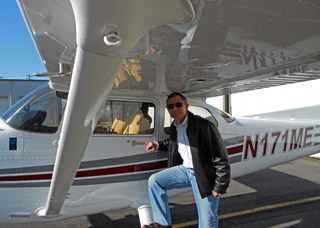
To find out, I talked with aircraft dealer George E. Van Bortel, John Frank of the Cessna Pilots Association, and Vref, AOPA’s aircraft price evaluation partner. Van Bortel did his own analysis of the two aircraft.
The bottom line. Let’s summarize the bottom line first.
Van Bortel, who specializes in older Cessnas, thinks you are better off following the old adage, “You get what you pay for.” Vref Publisher Fletcher Aldredge tends to agree. “All things being equal, most people in the marketplace prefer newer.”
Frank is sticking by his recommendation in his 2009 Cessna 172 Skyhawk Buyers Guide that the best deal actually is a 1974 model 172. The study is available from the Cessna Pilots Association for $40 plus shipping. That said, he suggests avoiding the 1997 Skyhawk because aircraft built in the first year had fit and finish problems. The 1998 Cessna 172 is among his top picks, after the 1974 model.
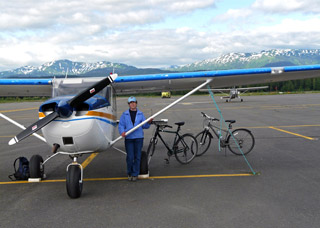
The prices of both the 1986 172P and 1997 172R models have dramatically plunged since 2008, but both have leveled off. Is the plunge over with nowhere to go but back up? The answer requires predicting the economy, which no one seems able to do.
You may find it difficult to find a 1986 Cessna 172P, since only 157 were made, but the same basic P model began in 1981 and continued through 1986. You save only a few thousand dollars buying a 172P from the early 1980s versus the 1986 year, according to information listed in the subscriber edition of Vref. It’s a matter of paying an average price in the low $40,000s for the early 1980s 172Ps or in the high $40,000s for the mid-1980s 172Ps. (Aircraft in pristine condition can command much more.)
What’s so hot about 1997? The most important change, after factory-applied corrosion proofing, was the 180-horsepower, fuel-injected Lycoming IO-360-L2A, derated to 160 horsepower. The engine was loafing, meaning low engine wear and good fuel economy. Right away, aftermarket manufacturers began to offer ways to bring the engine to its full power (one is to use a propeller with blades set at a different pitch). The very next year Cessna offered two models, the 172R from 1997 and the 172S with a propeller allowing the engine to produce 180 horsepower. The additional horsepower only provides a couple of knots in cruise speed but can be important to the folks living at high altitudes.
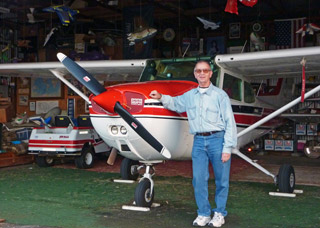
“The major improvements that were done to the 1996 airplane are that they were corrosion-proofed at the factory; they redesigned the fuel system, particularly the fuel tanks; they remodeled the seat-latching system, modeled after the Caravan seat-latching system; and they changed the electrical system,” Frank said. “Models 1986 and earlier had used the airframe as a ground. Now, all electrical equipment runs to its own ground points. They put in a J box that contains the major electrical components.” That solved some electrical problems associated with the 1986 and earlier models.
“There isn’t anything that the brand-new 172 does, performance-wise, that the earlier 172s don’t also do,” Frank added. “The one big exception is the Garmin G1000. [See “To Garmin or Not to Garmin.”] There’s no way to make a 172 go fast or carry a lot. [The 1997 and later models] will go a little faster, burning a little more gas. Economy is a little better on the new airplanes because of the fuel injection.” He estimates the 180-horsepower 1998 172S is only a few knots faster than the same engine derated to 160 horsepower on the 1997 172R.
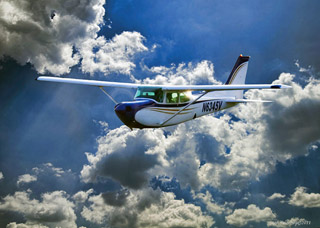
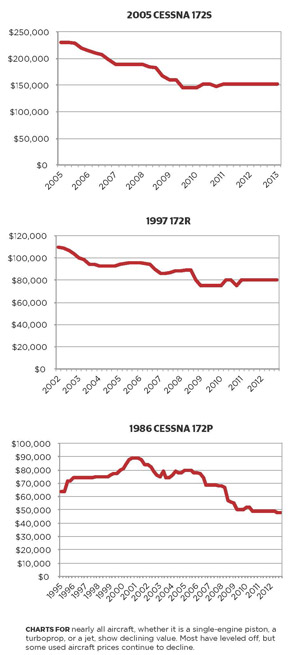 The Garmin G1000 glass cockpit was not added until 2005; both the older cockpit with round-dial instruments and the newer G1000 suite with information presented on two display screens were offered that year.
The Garmin G1000 glass cockpit was not added until 2005; both the older cockpit with round-dial instruments and the newer G1000 suite with information presented on two display screens were offered that year.
A word from our dealer. While Van Bortel can charge more for the 1997 and newer models, he predicts you will eventually pay that higher price by buying an older 172 and maintaining it.
“They have a lower return on investment and many have some kind of damage history just due to age. The 1986s were not equipped with factory airframe corrosion-proofing except the seaplane version; which is extremely rare,” he said.
“Our financing source is not excited about financing these older aircraft—they prefer aircraft less than 20 years old—and require more down payment, a higher interest rate, and a much shorter term. These aircraft are 27 years old. As a general rule, I don’t think they are as safe; it is not economically feasible to comply with all of the factory mandatory service bulletins on these aircraft, and most are not in compliance with them,” Van Bortel said.
Frank noted that when the production line began anew, most of the older FAA airworthiness directives were corrected, with fixes built into the 1997 and later aircraft.
It’s not really Part 23. Cessna representatives made much of the claim that the new-production 172s were built to the new, stricter FAA Part 23 regulations. However, that is impossible in some cases.
“That was true, except Cessna and the FAA struck a deal,” Frank said. “The FAA wanted it certified to Part 23, but in 1996, Part 23 had things in it that you just weren’t going to be able to do.” In some cases, Cessna had to instead certify to older amendments to Part 23 that were issued decades ago. Those amendments aren’t much different than the old Civil Aviation Regulation 3 used prior to 1965, Frank said. For example, certain parts like the wing spar must either be fail-safe, or there must be a secondary load path to carry the load in case the part fails. If neither condition exists, there must be a time limit at which the part must be retired.
That’s why Cessna’s Special Inspection Documents now put a life limit on the Cessna 172 airframe (and a few other single-engine models, as well) of 30,000 hours. Cessna created a Supplemental Inspection Document aimed at tracking airframe fatigue, but it is valid only for aircraft that have fewer than 30,000 hours on the airframe. “Beyond this, continued airworthiness of the airplane can no longer be assured,” the Supplemental Inspection Document says. “Retirement of this airframe is recommended when 30,000 flight hours have been accumulated.” The document is listed on a portion of the Cessna Aircraft Web site that requires registration and a password. The limit applies to 100-series Cessna airplanes (1953-1968), 150-series (1969 through 1976), the 152 (1978-1985), the 172 (1969-1986), the 182 (1977-1986), the 180/185 (1981-1985), and 177 (1976-1981) models. The 1986 172 and earlier models are subject to it, as are the 1997 and newer models.
That means the 30,000-hour limit applies to Frank’s favorite model, the 1974 Cessna 172. An average price for the 1974 model in this depressed, buyers’ market is less than $40,000, although a newly restored 1974 172 is currently priced at $55,000.
Best way to go. Frank is an expert on all things Cessna, so it is no surprise that he feels the 172 is the best first airplane a pilot can buy. Those in other owners groups for other brands of aircraft might disagree. Here’s his reasoning.
“The 172 is the best first airplane for anyone. They can buy one and fly it for a year or two years, and probably sell it for what they paid for it,” Frank said. “They’ll know what they really want.
“Aircraft ownership is a very expensive education, but the tuition is going to be the cheapest with a 172. Everyone knows how to work on them. The parts are readily available. It’s cheap to operate, easy to insure. It’s a great aircraft unless someone weighs 350 pounds. Then there’s a problem,” Frank said.
Email [email protected].
For more Cessna 172 stories from our members, visit the website.
To Garmin or not to Garmin?
That is the question. If you want to Garmin—that is, buy a Cessna 172 with a G1000 primary and multifunction flight display—you’ll need to reach up to the more expensive 2005 model year. That year, Cessna offered both cockpits with old-style round-dial instruments and gauges, and the Garmin glass cockpit. There are two engines to choose from, the 172R with a derated 160-horsepower Lycoming IO-360, and the full-power 180-horsepower 172S SP model. The 172 with the more powerful engine will chew about $150,000 out of your bank account, although you may be able to find the lower-power model with a G1000 for $130,000. The G1000 avionics suite amounts to $25,000 to $40,000 of the cost, depending on which expert you ask. “The non-G1000 airplanes can be a pretty good value because everyone wants the glass cockpit,” the Cessna Pilots Association’s John Frank said.
Pros and Cons
1986 172P
Pros
- Super-reliable 160-hp Lycoming O-320-D2 engine
- Lower acquisition cost
Cons
- Carries decades of airworthiness directives
- Maintenance likely to be higher
1997 172R and 1998 172S
Pros
- Fuel injected IO-360-L2A engine derated (172R) or 180 hp (172S)
- Factory corrosion-proofing
Cons
- Higher acquisition cost
- Early difficulties with the engine, now resolved



